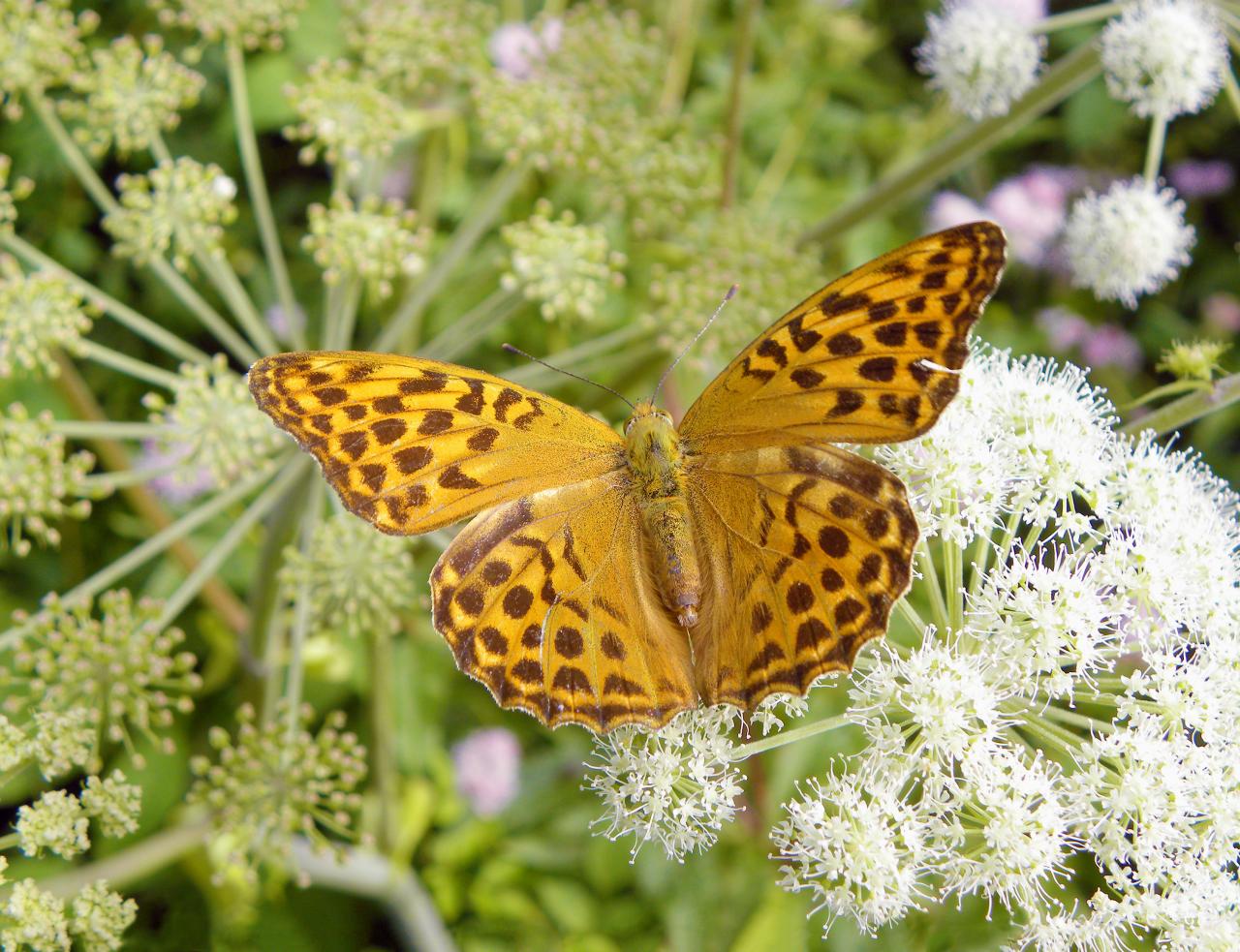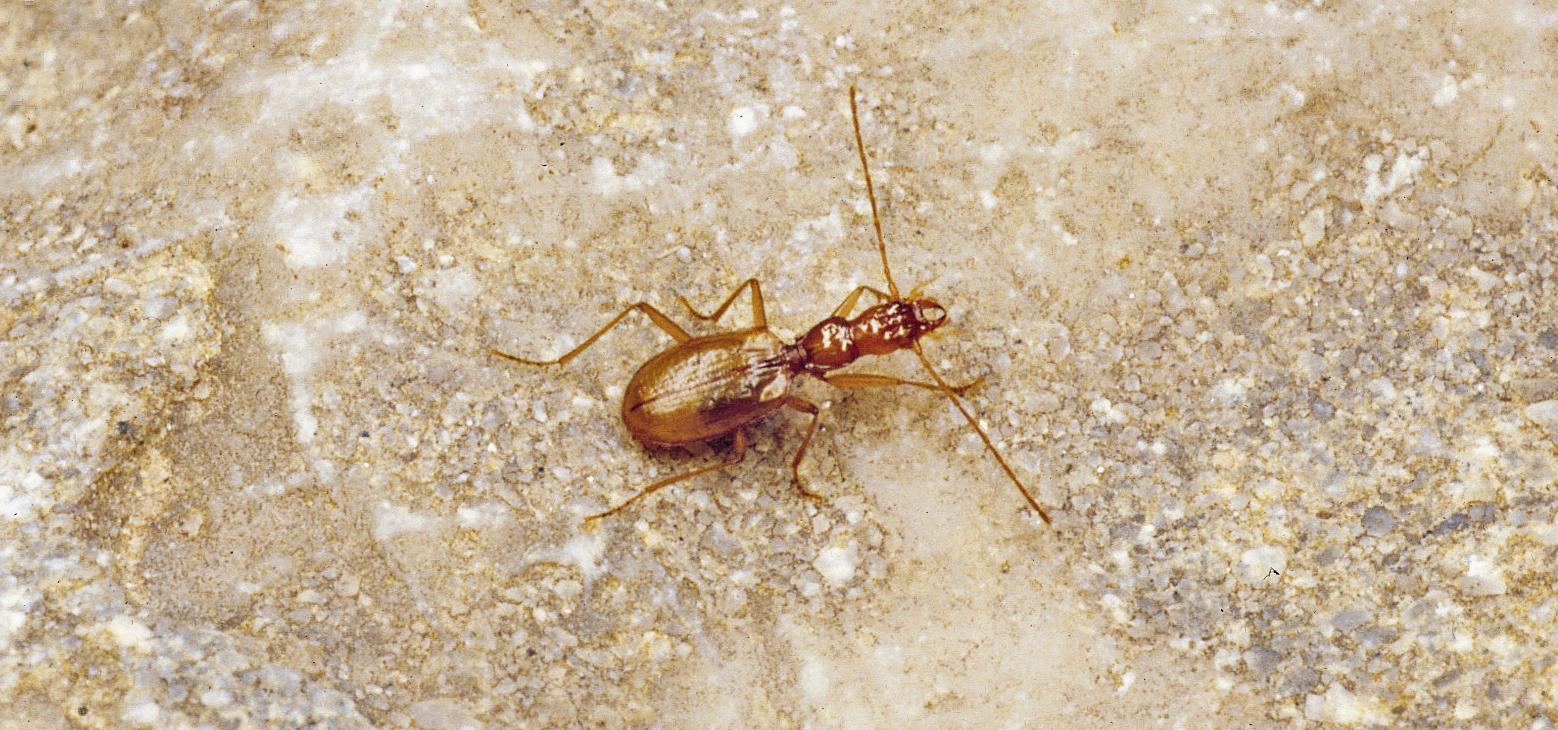Flying gemstones
Butterflies
Currently, 1560 butterfly species have been recorded and a further 200 species live in the immediately adjacent valleys of the national park. An internationally significant diversity, which is supported by partly unique and rare habitats! Due to the high degree of naturalness and the remarkable geomorphological and orographic conditions, there are important refugial areas for butterflies in the area, including a number of internationally protected or nationally endangered species.
Compared to other invertebrates, the level of knowledge about butterflies can already be regarded as relatively good. This above-average level of information is due to the traditional orientation of mainly voluntary, private researchers, some of whose research activities go back over 100 years. In particular, entomologists from the Steyr and Gmunden Entomological Working Groups have been very active since the establishment of the National Park: Herbert Kerschbaumsteiner (Styria), Dr. Martin Schwarz (Linz), Roland Mayrhofer (Steyr), August Pürstinger (Kirchdorf/Krems), Norbert Pöll (Bad Ischl), Franz Pühringer (St. Konrad) and unforgettably Josef Wimmer † (Steyr) and Friedrich Stöckl † (Vorchdorf) . Dr. Peter Huemer (Tyrolean Provincial Museum, Innsbruck) has published a popular scientific account of the special diversity of the local butterfly world in the book "Schmetterlinge - Vielfalt durch Wildnis".
In recent years, the butterfly fauna of the cultural landscape of the national park (alpine pastures, meadows) in particular has been studied and concrete management measures derived from this (Dr. Patrick Gros, Haus der Natur in Salzburg).
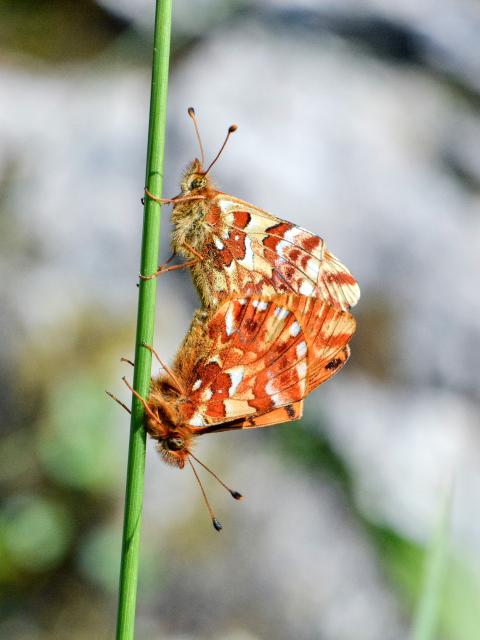
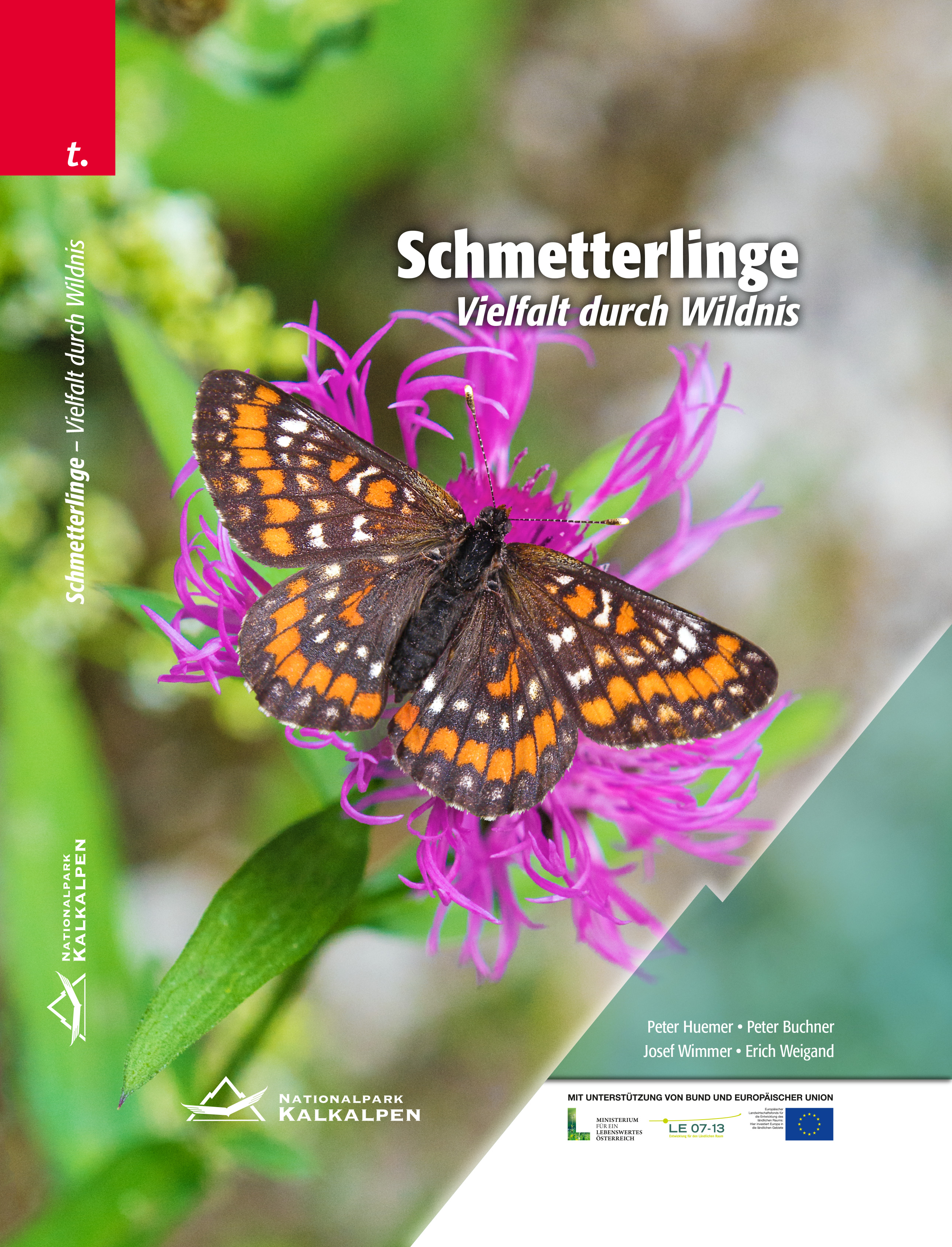
Butterfly book for nature lovers
Butterflies - diversity through wildlife
Who would have thought that Kalkalpen National Park is home to more than 1,500 different butterfly species? This area of around 200 square kilometers is considered to be one of the last large wilderness areas in Central Europe, characterized by near-natural forests, unspoilt torrents and pristine mountain landscapes. Butterflies that have disappeared in many places find a last refuge here and many of them can still be observed frequently. From the gorge and alluvial forest near the valley, to alpine grass mats and rocky biotopes, to the gentle alpine pastures and meadows: Based on over 20 characteristic habitats, this book presents the typical butterfly fauna in each case. This makes the book a valuable companion for hikes in the Eastern Alps and especially in the Kalkalpen National Park area.
Authors: Peter Huemer, Peter Buchner, Josef Wimmer and Erich Weigand
Published by Verlag Trauner GmbH, 2014: ISBN978-3-99033-261-0

Beetle
With around 7,400 species in Austria, beetles are the third most species-rich group of insects.
Many species are highly specialized and depend on very specific and small-scale habitats. A remarkably high number have specialized in forest habitats, particularly in the wood of dead trees. Such habitats can only be found in Central Europe in very remote areas that are difficult to manage in terms of forestry. However, it is particularly in these relict natural forest islands that most of the highly specialized beetle species, which experts refer to as "primeval forest relict species", have survived to this day. Many of these special rarities are native to Kalkalpen National Park and their population density is increasing due to the ever-growing forest wilderness with lots of dead wood. The best-known wood-dwelling beetle species in the national park is the alpine longhorn beetle. In addition to this, two other wood-dwelling nature conservation target species of the European Union with the highest protection category (Annex II of the Habitats Directive) can be found in the national park: the scarlet longhorned beetle and the mountain forest boring beetle.
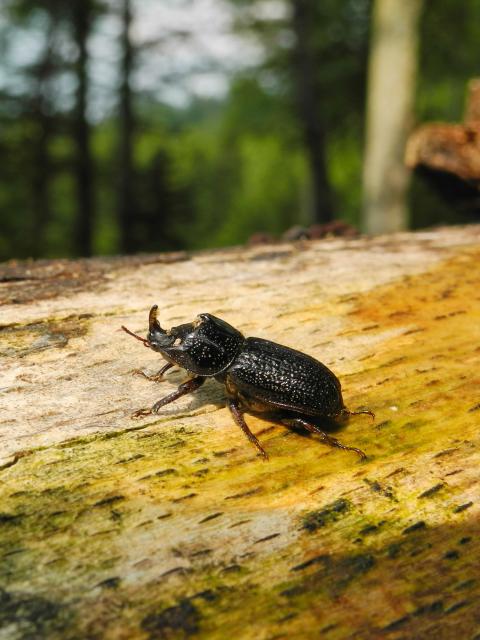
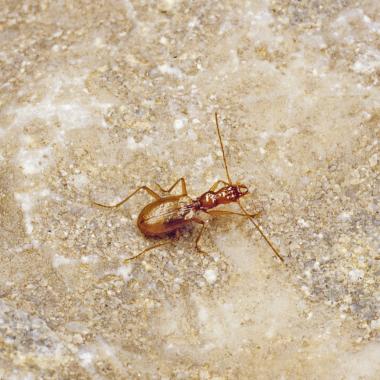
Arctaphaenops muellneri
Cave ground beetle
Müllner's Northeast Alpine blind beetle(Arctaphaenops muellneri)
The blind and almost transparent ground beetle is found exclusively in Upper Austria and is a true cave animal. It lives in perpetual darkness and is very fond of moisture. Almost the entire distribution area of this beetle lies within today's Kalkalpen National Park, which is why it also bears great responsibility for the conservation of this rarity. It is now known from five caves in Kalkalpen National Park and two more in the immediate vicinity.
